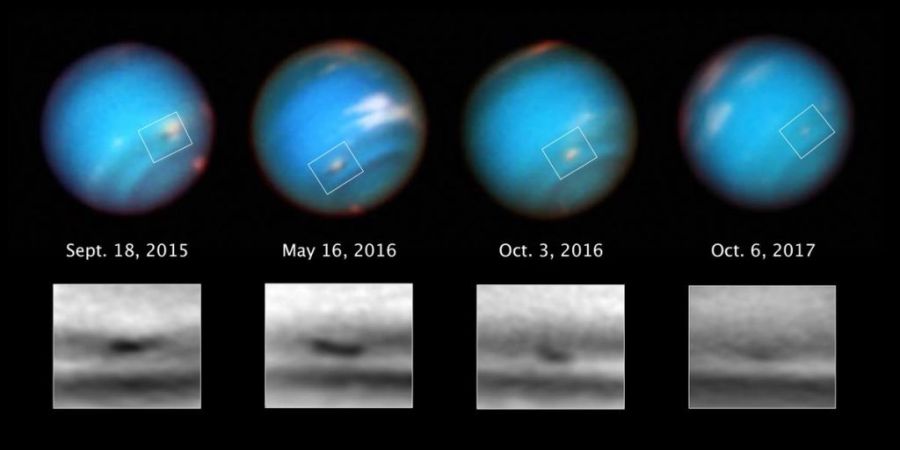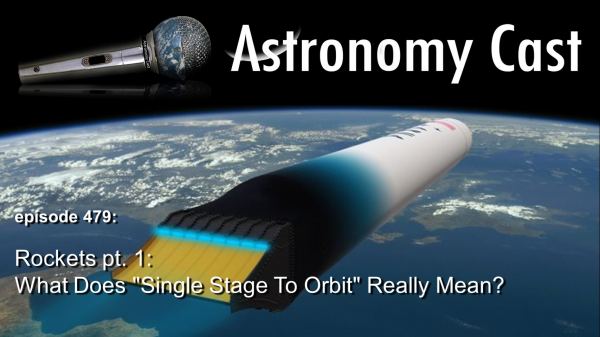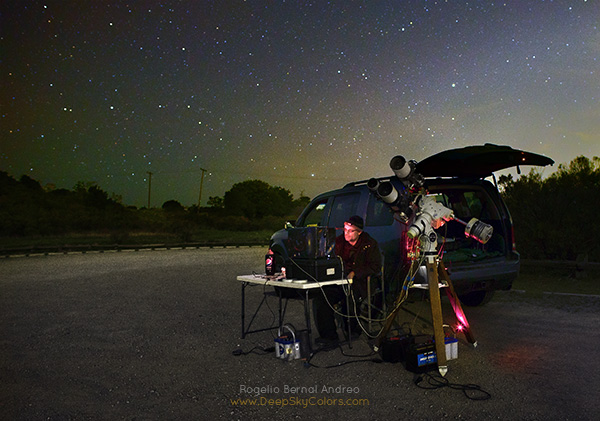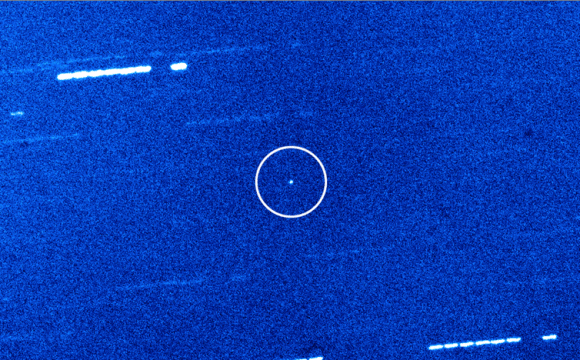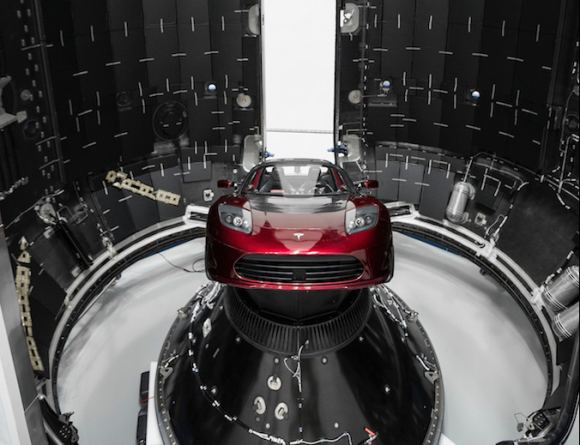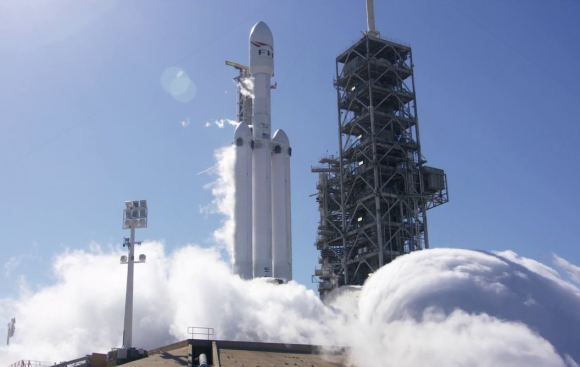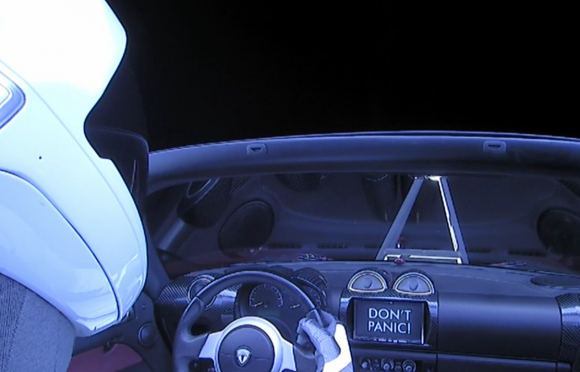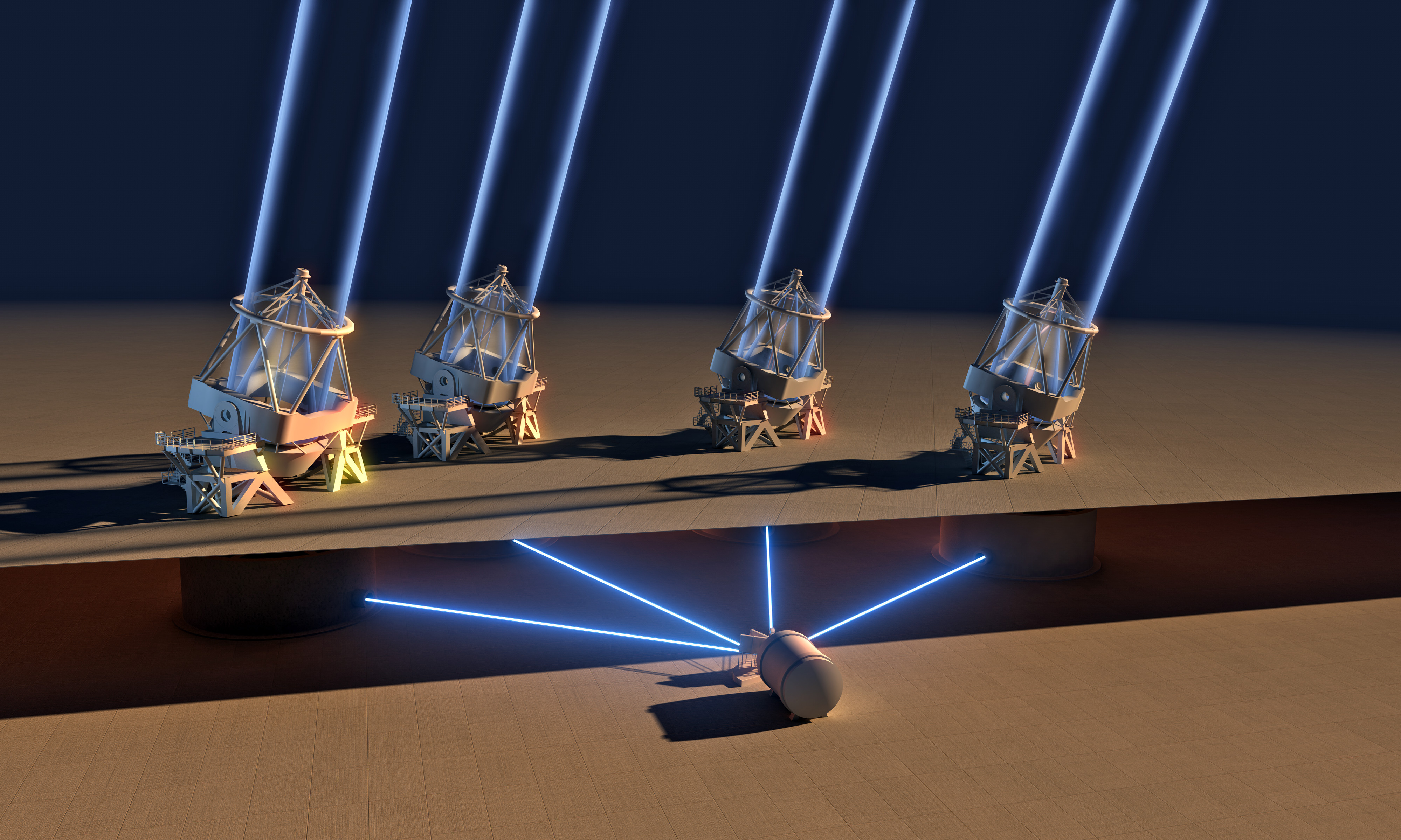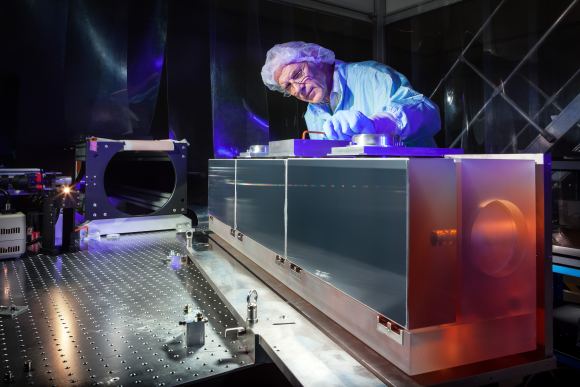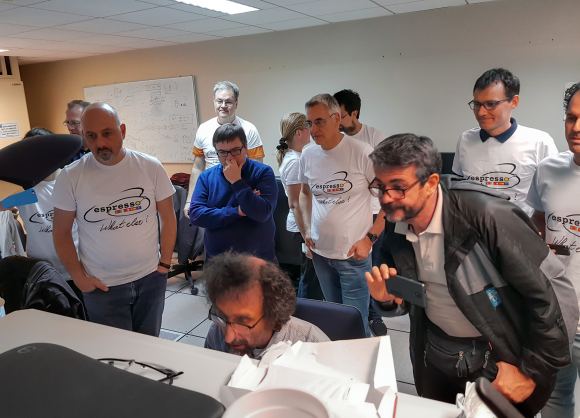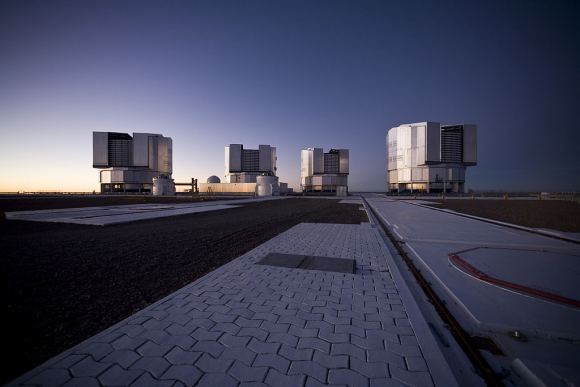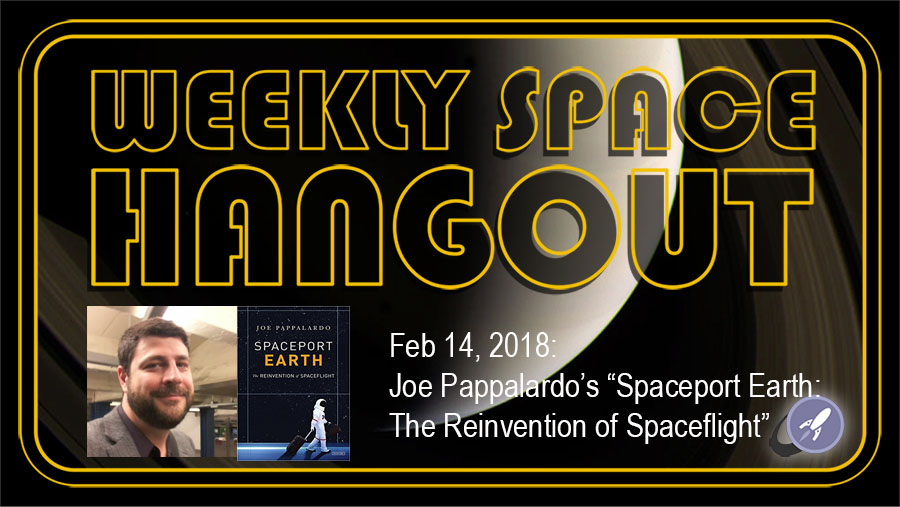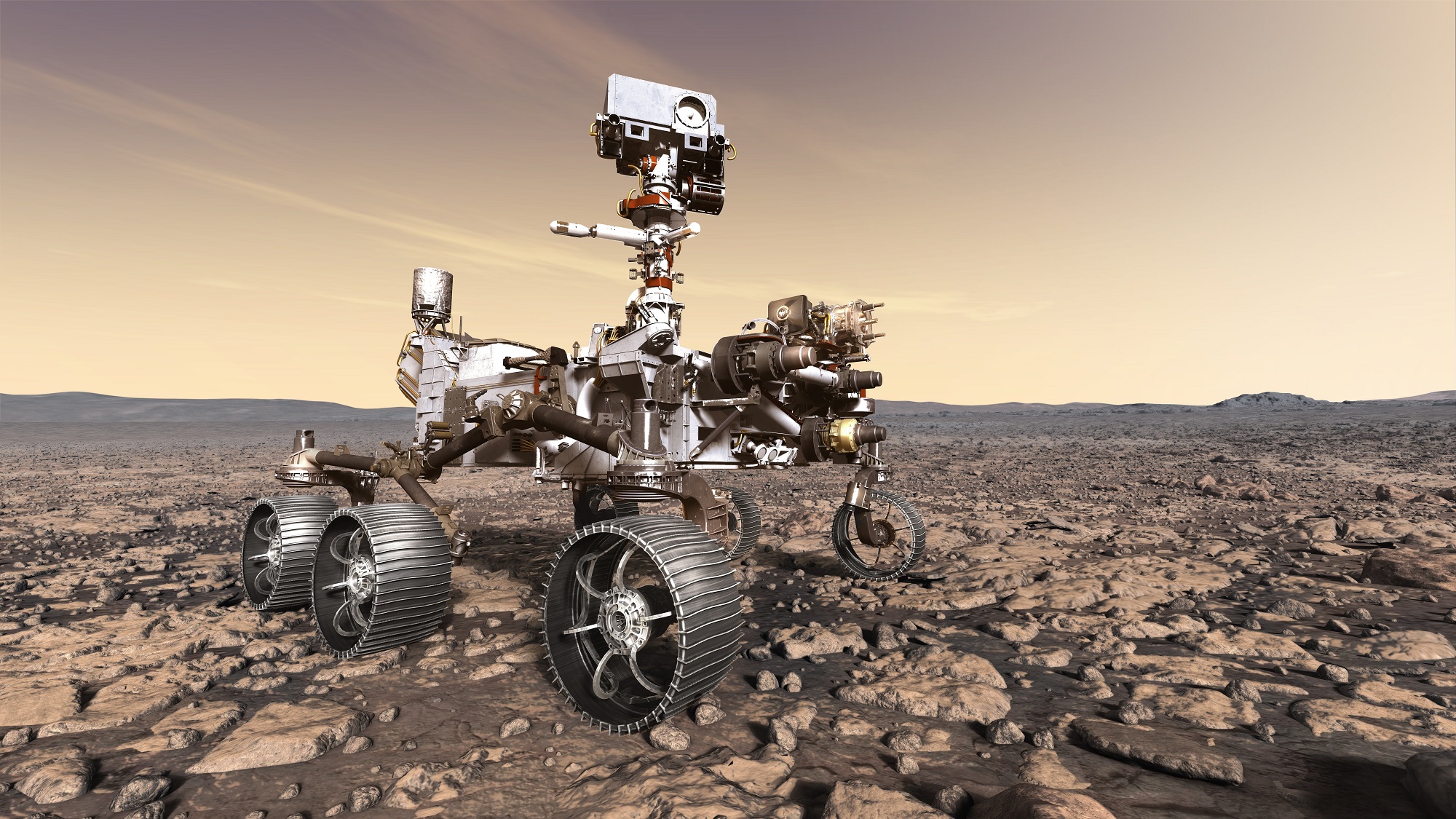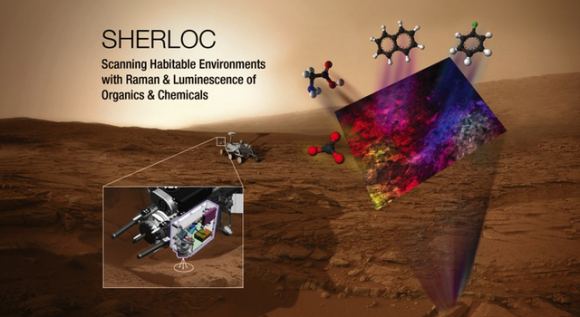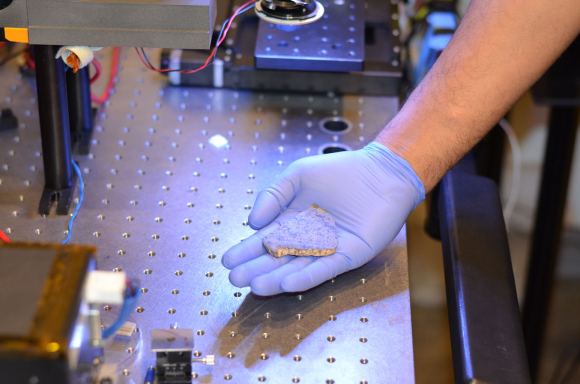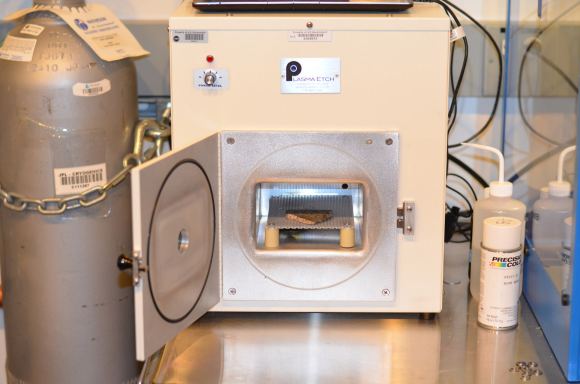Back in the late 1980’s, Voyager 2 was the first spacecraft to capture images of the giant storms in Neptune’s atmosphere. Before then, little was known about the deep winds cycling through Neptune’s atmosphere. But Hubble has been turning its sharp eye towards Neptune over the years to study these storms, and over the past couple of years, it’s watched one enormous storm petering out of existence.
“It looks like we’re capturing the demise of this dark vortex, and it’s different from what well-known studies led us to expect.” – Michael H. Wong, University of California at Berkeley.
When we think of storms on the other planets in our Solar System, we automatically think of Jupiter. Jupiter’s Great Red Spot is a fixture in our Solar System, and has lasted 200 years or more. But the storms on Neptune are different: they’re transient.

The storm on Neptune moves in an anti-cyclonic direction, and if it were on Earth, it would span from Boston to Portugal. Neptune has a much deeper atmosphere than Earth—in fact it’s all atmosphere—and this storm brings up material from deep inside. This gives scientists a chance to study the depths of Neptune’s atmosphere without sending a spacecraft there.
The first question facing scientists is ‘What is the storm made of?’ The best candidate is a chemical called hydrogen sulfide (H2S). H2S is a toxic chemical that stinks like rotten eggs. But particles of H2S are not actually dark, they’re reflective. Joshua Tollefson from the University of California at Berkeley, explains: “The particles themselves are still highly reflective; they are just slightly darker than the particles in the surrounding atmosphere.”
“We have no evidence of how these vortices are formed or how fast they rotate.” – Agustín Sánchez-Lavega, University of the Basque Country in Spain.
But beyond guessing what chemical the spot might me made of, scientists don’t know much else. “We have no evidence of how these vortices are formed or how fast they rotate,” said Agustín Sánchez-Lavega from the University of the Basque Country in Spain. “It is most likely that they arise from an instability in the sheared eastward and westward winds.”
There’ve been predictions about how storms on Neptune should behave, based on work done in the past. The expectation was that storms like this would drift toward the equator, then break up in a burst of activity. But this dark storm is on its own path, and is defying expectations.
“We thought that once the vortex got too close to the equator, it would break up and perhaps create a spectacular outburst of cloud activity.” – Michael H. Wong, University of California at Berkeley.
“It looks like we’re capturing the demise of this dark vortex, and it’s different from what well-known studies led us to expect,” said Michael H. Wong of the University of California at Berkeley, referring to work by Ray LeBeau (now at St. Louis University) and Tim Dowling’s team at the University of Louisville. “Their dynamical simulations said that anticyclones under Neptune’s wind shear would probably drift toward the equator. We thought that once the vortex got too close to the equator, it would break up and perhaps create a spectacular outburst of cloud activity.”
Rather than going out in some kind of notable burst of activity, this storm is just fading away. And it’s also not drifting toward the equator as expected, but is making its way toward the south pole. Again, the inevitable comparison is with Jupiter’s Great Red Spot (GRS).
The GRS is held in place by the prominent storm bands in Jupiter’s atmosphere. And those bands move in alternating directions, constraining the movement of the GRS. Neptune doesn’t have those bands, so it’s thought that storms on Neptune would tend to drift to the equator, rather than toward the south pole.

This isn’t the first time that Hubble has been keeping an eye on Neptune’s storms. The Space Telescope has also looked at storms on Neptune in 1994 and 1996. The video below tells the story of Hubble’s storm watching mission.
The images of Neptune’s storms are from the Hubble Outer Planets Atmosphere Legacy (OPAL) program. OPAL gathers long-term baseline images of the outer planets to help us understand the evolution and atmospheres of the gas giants. Images of Jupiter, Saturn, Uranus and Neptune are being taken with a variety of filters to form a kind of time-lapse database of atmospheric activity on the four gas planets.

